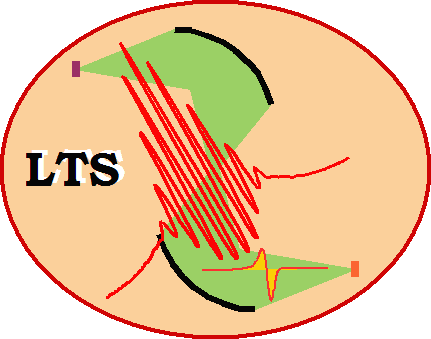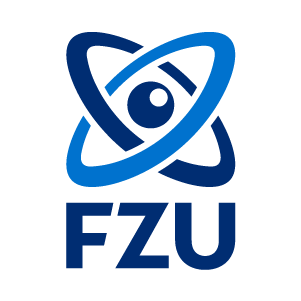
THz science and technology
Projects
Today, x-ray detection techniques are widely used in the homeland security, such as airport surveillance and custom activities, and in the medical diagnostics. However, x-rays are ionizing, can provoke cancer like diseases and, moreover, they are unable to detect fabric, plastic and concealed hazardous materials. The terahertz (THz) technology has a potential to solve these problems; however, mainly due to the low photon energy of THz waves, it is still difficult to accomplish high-speed and sensitive room temperature THz detection. The proposed work aims to advance the THz detection technology by exploring exciting opto-electronic properties of topological insulators (TIs), metal organic frameworks (MOFs) and their interfaces. I will focus the research on the design and fabrication of heterojunctions consisting of TI thin films and semiconducting two-dimensional MOFs and on the optimization of their electronic properties and interaction strength with THz radiation. To address the enhancement of light-matter interaction in these novel devices I will vary the chemical composition of MOF layers, thus enabling the control of their crystalline order and of the coupling between organic and inorganic components. TIs surface properties will then enhance the charge carrier transport at the interface due to topological protection against the carrier scattering. These ingredients will allow tuning and optimization of the photocurrent generation upon absorption of THz photons, i.e. of the photodetection process. The project will answer questions of the physical mechanisms of charge carrier transport in MOFs and at TI-MOF interfaces and of the key parameters for an enhancement of optoelectronic properties in Ti-MOF heterojunctions.
(hide abstract)Past projects
Understanding of the photoconductivity mechanisms in semiconductors on the nanoscopic level is a crucial prerequisite for the conception of novel optoelectronic and photovoltaic applications. Terahertz conductivity spectra provide information on the charge transport phenomena, which occur typically at this length scale, without the need of electrical contacts to be attached. In this project we will develop a concerted experimental and theoretical approach for microscopic description and proper understanding of ultrafast photoconductivity in nanoscale semiconductor systems. In optical pump – terahertz probe experiments we will emphasize an ultra-broadband spectroscopic aspect. In theory we will focus on the quantum description of the mechanisms of charge carrier localization in semiconductor nanostructures and on phenomena connected with the onset of the nonlinear transport regime including an appropriate effective medium theory description of the morphology of samples.
(hide abstract)Cobalt oxides comprise a wide group of materials in which important electron correlations lead to a large richness of interesting properties (e.g. large thermoelectric coefficient or superconductivity). The cobalt ions can frequently attain different electronic configurations, which is at the root of complex and often contradicting behaviors with varying temperature and material composition. Charge transport is one of the most important processes which reflect the internal state of these materials, and it is also of fundamental interest in potential applications. In cobaltites, we will study namely the mechanism of the metal-insulator transition. In layered cobaltates, we fill focus on the relation between charge transport and magnetic ordering. We will systematically study the conductivity in the terahertz spectral range, which permits a clear identification of charge transport mechanisms and charge confinement both in single crystals and in polycrystalline systems. Combination with common characterization methods will allow gaining a global picture of the behavior of the oxides.
(hide abstract)The realization of efficient, cheap, reliable, scalable and portable terahertz (THz) radiation sources and detectors is one of the important objectives in modern applied physics. THz emitters and detectors have potential applications in biology, medicine, security and nondestructive in-depth imaging. However none of the existing THz devices satisfy the application requirements. The project consortium, which includes teams from the leading European universities: Durham, Vilnius, Paris-7, Exeter, St. Petersburg, Prague, Amiens, University of Iceland, Swiss Company ""Alpes laser"" and several industrial associated partners, proposes a broad range of new approaches aiming to bridge the ""terahertz gap"":
- Polariton-based THz emission using microcavities in the strong coupling regime,
- New types and concepts of semiconducting materials for short pulsed THz emission,
- Carbon nanotubes and graphene as THz emitters and detectors,
- Application of Ferroelectric and Multiferroic materials for THz devices.
To achieve this objective, we are planning to educate and train a team of collaborating young physicists and device engineers able to conduct research and exploit its application in this new area
(hide abstract)As a result of the ongoing progress of terahertz technologies, opportunities to use novel and actively tunable components for emerging applications are expected. The project will investigate ferroelectric materials exhibiting a strong dependence of the dielectric function on external parameters, especially electric bias. We will mainly focus on perovskite oxide ferroelectrics (bulk crystals, ceramics and thin films), where understanding of the lattice anharmonicity is crucial for the enhancement of their dielectric tuning, and where their chemical composition can be smoothly varied and used for the optimization of their properties. These materials will be combined with metamaterial concepts and employed to develop tunable THz photonic components, including those with a negative effective permeability or a negative refractive index. The experimental characterization will be performed by time-domain terahertz spectroscopy; electromagnetic simulations will be conducted in order to understand the wave propagation through the structures and to optimize their response.
(hide abstract)Ultrafast conductivity in nanostructured semiconductors and the related nanoscopic charge transport are the key issues for the development of optoelectronic and photovoltaic applications. These processes will be studied by optical pump – THz probe spectroscopy which constitutes a contact-free method accessing the relevant part of the spectrum. Complemented with ultrafast optical spectroscopy, with sample nano-topology inspection and with simulations of carrier motion it will reveal information about the length scales of the carrier localization, conductive coupling among nanoelements, energy landscape within nanostructured samples and local depolarization fields. Within the proposed project we will study nanoscopic transport of charges immediately after photo-excitation in disordered semiconducting systems oriented namely on solar cell technologies (nanostructured Si, Si nanowires, molecular wires, CdSe, CdS nanoparticles, etc.). We will develop adequate physical models and draw general conclusions about charge transport on the nanoscale.
(hide abstract)
